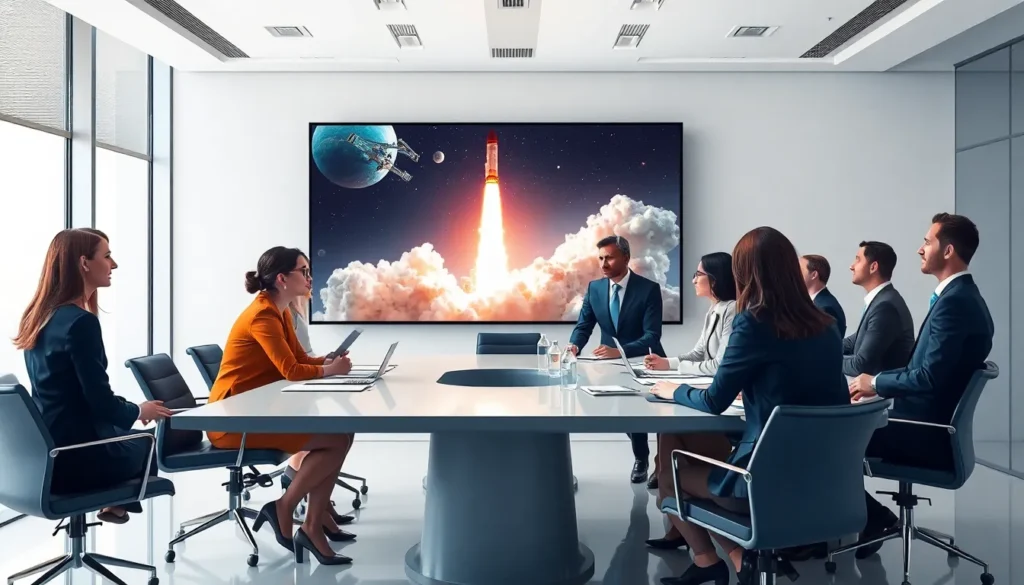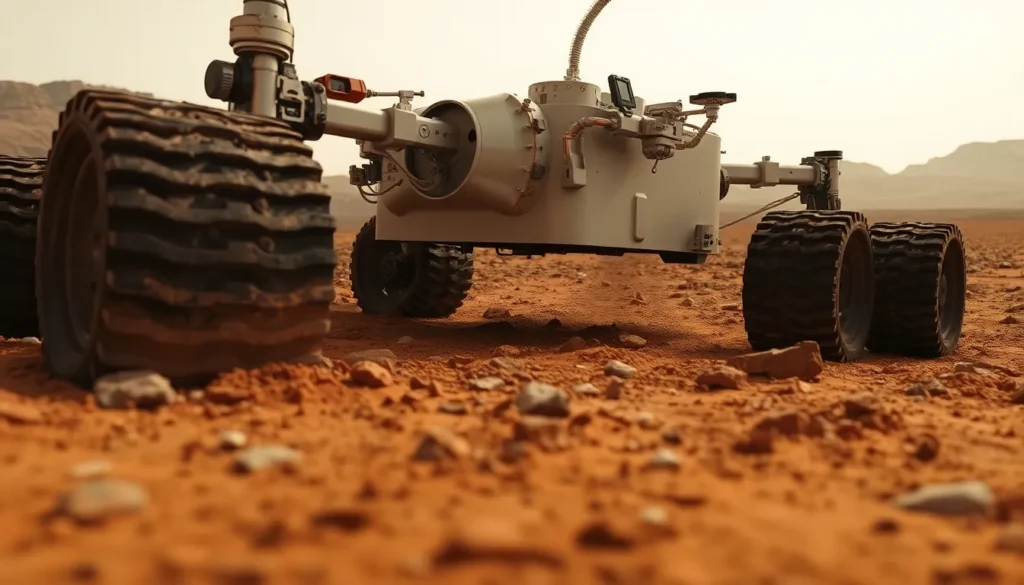Table of Contents
ToggleSpace exploration vehicles are the unsung heroes of the cosmos, boldly going where no vehicle has gone before. From rovers that scamper across Martian dust to spacecraft that dance around distant asteroids, these machines are the ultimate thrill-seekers of the universe. They don’t just take us to the stars; they bring back stories that make even the most adventurous Earthling green with envy.
Overview of Space Exploration Vehicles
Space exploration vehicles play a crucial role in advancing our understanding of the universe. These vehicles, including rovers, landers, and orbiters, execute missions that collect data about other celestial bodies. Rovers traverse the surface of planets like Mars, analyzing soil and sending back images. Meanwhile, landers study atmospheric conditions and surface material composition.
Spacecraft, designed for various functions, also transport astronauts and equipment beyond Earth’s atmosphere. Notable examples include the Space Shuttle and the International Space Station, both essential for human life and research in orbit. The development of spacecraft continues to evolve, addressing challenges such as propulsion systems and life support for long-duration missions.
Significant advancements in technology improve the reliability and efficiency of these vehicles. They utilize innovative materials and engineering techniques, which enhance performance under extreme conditions. Each mission’s data contributes to a broader understanding of space, revealing insights into planetary formations and potential for life beyond Earth.
Space agencies worldwide, like NASA and ESA, prioritize collaboration in developing these exploration vehicles. Partnerships foster the exchange of knowledge and resources, amplifying the capabilities of space missions. Future projects aim to explore asteroids and the Moon, focusing on sustainable human presence and resource utilization.
Together, these vehicles embody human ingenuity and curiosity, pushing the boundaries of what is possible in space exploration. As technology progresses, the exploration of distant worlds continues to capture the imagination, inspiring future generations to look toward the stars.
Types of Space Exploration Vehicles

Space exploration vehicles vary in design and function. Each type plays a unique role in missions beyond Earth’s atmosphere.
Rovers
Rovers are mobile robots that traverse planetary surfaces. They analyze soil samples and capture detailed images of landscapes. Mars rovers, such as Curiosity and Perseverance, provide critical data about the planet’s geology and atmosphere. Findings from these vehicles contribute to the understanding of past water presence on Mars. Advanced navigation systems allow them to maneuver around obstacles while transmitting live data back to Earth. Their ability to perform experiments in situ enhances scientific discoveries significantly.
Landers
Landers are designed for soft landings on celestial bodies. They conduct surface operations and experiments. A notable example includes the InSight lander, which studies seismic activity on Mars. These vehicles analyze atmospheric conditions and surface materials, providing essential insights into the body they explore. Instruments on landers help measure temperature, pressure, and other crucial data. Their success directly influences future missions aimed at further understanding planetary environments.
Space Probes
Space probes travel beyond the solar system to gather information about distant celestial bodies. They provide data on planets, moons, and asteroids. Voyager 1 and Voyager 2 are famous examples that have sent back invaluable information since their launch in 1977. Probes often carry instruments to analyze magnetic fields, radiation, and chemical compositions. They help scientists explore the outer planets and beyond, offering a glimpse into the universe’s vastness. These vehicles expand human knowledge of space’s mysteries significantly.
Orbital Missions
Orbital missions deploy vehicles that circle celestial bodies. These missions study atmospheric dynamics and surface conditions from above. The Hubble Space Telescope captures stunning imagery of the universe while providing deep insights into cosmic phenomena. Additionally, the International Space Station serves as a platform for long-term human presence in low Earth orbit. Data from orbital missions aids in understanding the effects of microgravity on life. Continuing advancements enhance the capabilities of these missions, pushing the boundaries of human exploration.
Notable Space Exploration Vehicles
Space exploration vehicles represent incredible achievements in technology and engineering. Their contributions to our understanding of the universe shape the way we perceive the cosmos.
Voyager Probes
Voyager 1 and Voyager 2 launched in 1977, designed to explore the outer planets. These probes gathered groundbreaking data on Jupiter, Saturn, Uranus, and Neptune. They continue to provide valuable insights as they travel through interstellar space. Voyager 1 holds the record as the furthest human-made object from Earth, reaching over 14 billion miles from the planet. Scientists use the information collected to study cosmic phenomena and the heliosphere, deepening understanding of space beyond our solar system.
Mars Rovers
Curiosity and Perseverance are among the most notable rovers studying Mars’ terrain. Curiosity landed on the planet in 2012, analyzing soil and rock samples while seeking criteria for past habitability. Perseverance, which landed in 2021, continues this mission by searching for signs of ancient microbial life. Both rovers send back stunning images and data, showcasing Mars’ geology and climate. Rovers are equipped with sophisticated tools for conducting experiments, thus enhancing knowledge about potential future human exploration.
New Horizons
New Horizons made headlines with its flyby of Pluto in July 2015. This spacecraft provided the first close-up images of the dwarf planet and its moons, revolutionizing our understanding of the Kuiper Belt. Data from New Horizons revealed complex geological features and an atmosphere on Pluto. Following its Pluto encounter, the spacecraft explored Arrokoth, a distant object, enhancing knowledge of the early solar system. New Horizons has paved the way for further exploration of icy bodies beyond Neptune, uncovering the mysteries of the outer solar system.
Future of Space Exploration Vehicles
Innovative design concepts push the boundaries of space exploration vehicles, aiming for efficiency and adaptability. Modular designs allow for upgrades, enhancing mission capabilities without complete overhauls. Lightweight materials, such as carbon composites, reduce launch costs while maintaining structural integrity. Solar sails emerge as a novel propulsion method, harnessing sunlight for deep space travel. Design integration prioritizes automation and robotics, improving operational autonomy during long missions.
Upcoming missions promise exciting developments in interplanetary exploration. NASA’s Artemis program plans to return humans to the Moon by 2025, utilizing the Orion spacecraft. This mission aims to establish a lunar base, facilitating Mars exploration. ESA’s Jupiter Icy Moons Explorer (JUICE) is set to launch in 2023, targeting the icy moons of Jupiter to study potential habitability. Moreover, SpaceX’s Starship is geared for crewed missions to Mars, showcasing advanced life support systems. These missions reflect humanity’s resilience and ambition to discover and understand the cosmos.
Conclusion
Space exploration vehicles are pivotal in humanity’s quest to understand the universe. Their ability to traverse hostile environments and gather critical data is unmatched. Each mission not only enhances scientific knowledge but also ignites curiosity and imagination on Earth.
As technology continues to evolve, these vehicles will become even more sophisticated. Future missions promise to unveil the mysteries of the Moon, Mars, and beyond, paving the way for sustainable exploration. The collaboration among global space agencies ensures that the journey into the cosmos remains a shared endeavor.
With each successful launch and groundbreaking discovery, these vehicles inspire generations to dream big and reach for the stars. The future of space exploration is bright and full of possibilities, driven by the relentless pursuit of knowledge and adventure.







